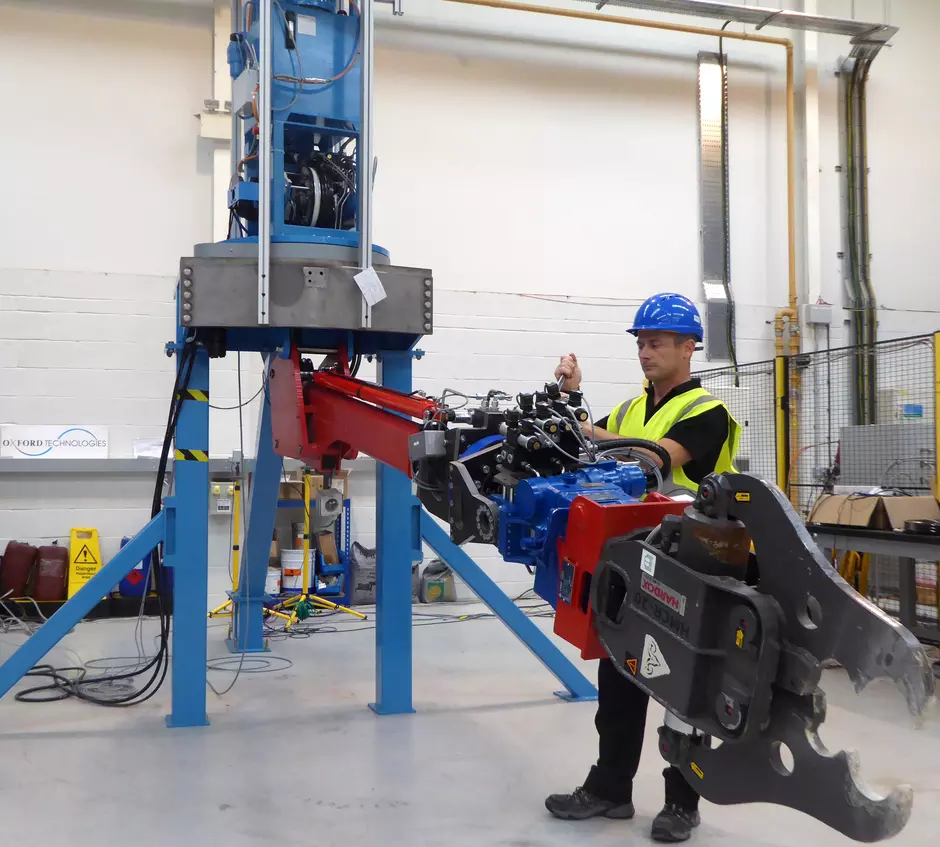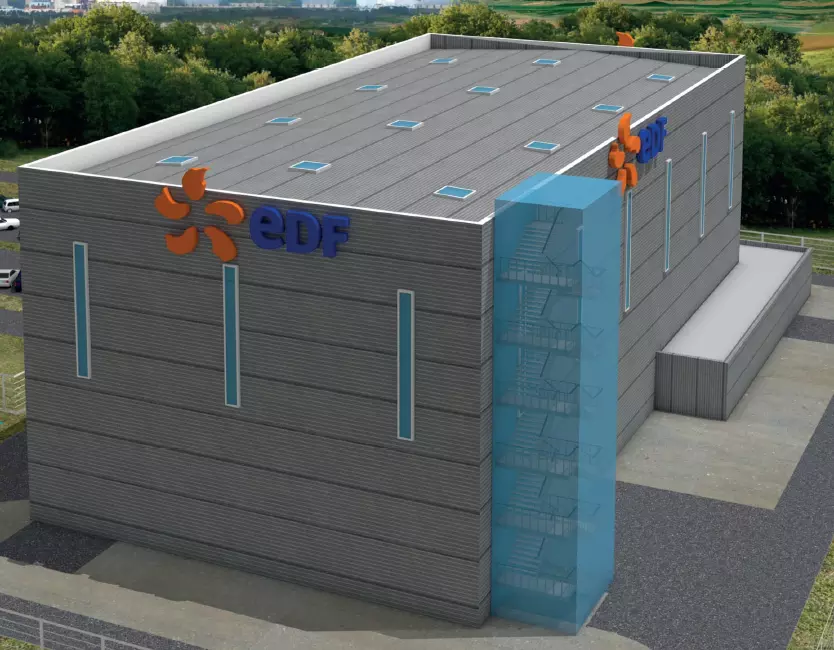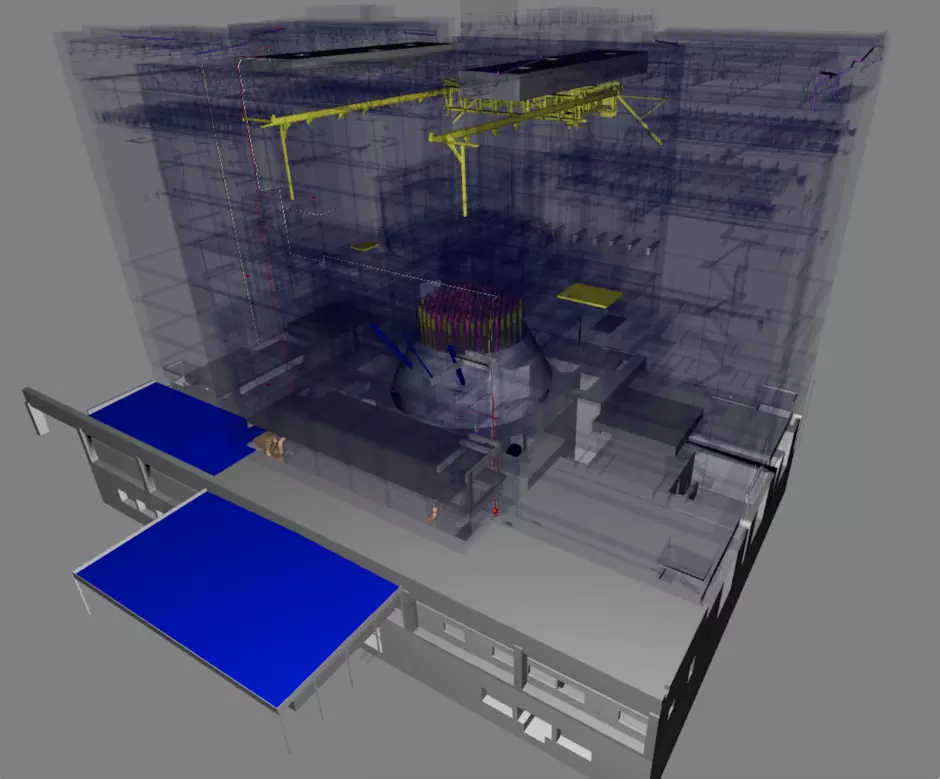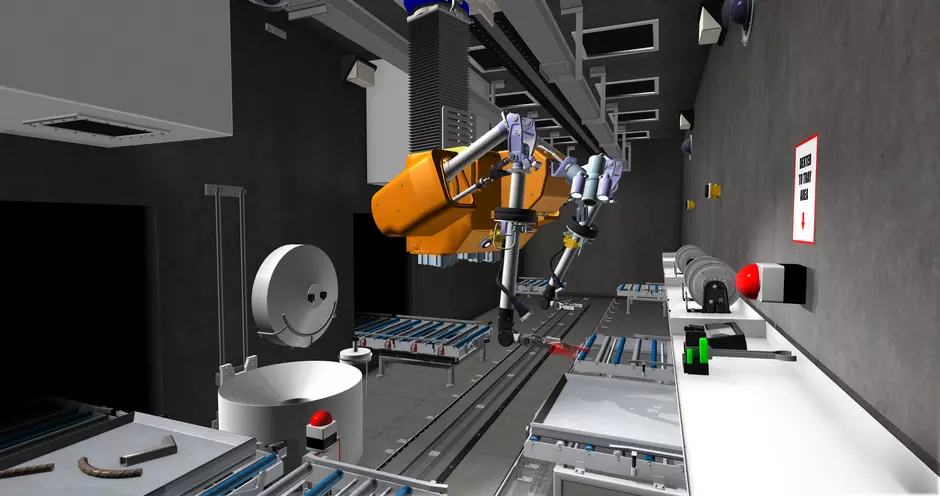Graphitech seeks to tackle two major technical challenges
develop remote-operated tools to break up complex, large (several meters in size) concrete and metal structures, as well as the tools to extract graphite bricks and piles
design systems and articulated arms so that these tools can be remotely deployed inside reactors
Leveraging the wide experience of various aspects of nuclear dismantling gained by EDF Group and Veolia over many years, Graphitech works to develop its expertise in the following fields:
Design engineering (concept design, design studies) and the design of dismantlement tools
Defining and optimizing dismantling scenarios and designing remote-operated tools, arms, platforms, etc.

Physical trials for qualification testing of dismantlement tools
Graphitech uses a demonstrator made available by EDF. This facility is located at Beaumont-en-Véron in north-west France, alongside the Chinon nuclear power plant. The dimensions of the demonstrator’s test hall make it possible to carry out full-scale testing that precisely reproduces the large size of graphite reactors and the access distances needed for the remote-operated tools.

Development of digital methods
In addition to physical testing with scale models, Graphitech also uses the very latest digital technologies (3D digital simulation, virtual reality, etc.) to integrate remote-operated dismantling tools and robots into different reactors’ environments.

Virtual reality, a technology with far-reaching potential
Using virtual reality technology to reproduce an environment makes it possible to anticipate many of the risks that will be encountered during the project execution phase. Immersive virtual inspections of environments with high levels of radiation or extreme temperatures that make human presence impossible can help to build a fuller understanding of challenges to tackle and the obstacles inherent to any particular project.

The technology allows engineers to test and validate different options for remote- operated solutions and approaches, using a safe and controlled virtual environment.
Prior to any on-site intervention, engineers can also tell clients which validated solution is the most appropriate for their project. Once a range of scenarios are established, the team can then carry out virtual testing before running the in-depth feasibility studies and safety checks that allow them to make well-informed decisions about the specific characteristics of every project. A tool such as this can also be used to train operators for future operations.




